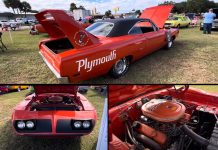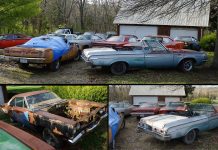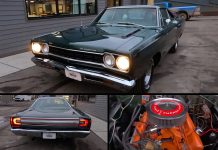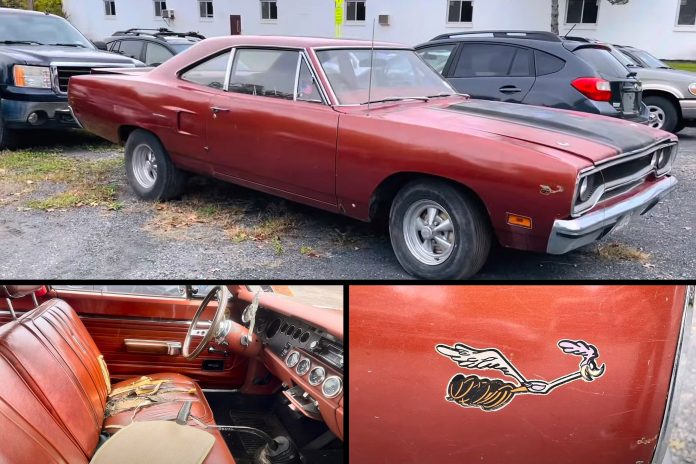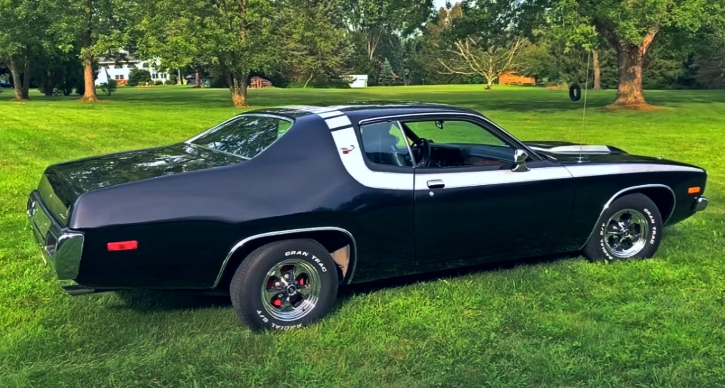In the span from 1968 to 1971, the Plymouth Road Runner achieved an impressive sales figure of nearly 200,000 units, solidifying its place in automotive history. However, among the midsize nameplates of its time, this golden-era Road Runner stands out for its rarity. Even today, over 50 years later, these classic cars are still emerging from long-term storage.

Engine Variants and Unearthed Treasures
While the HEMI and 440-cubic-inch engine-equipped models are scarce, the majority of neglected Road Runners from that era boast the more common 383-cubic-inch big-block V8. The featured Dark Burnt Orange 1970 Road Runner falls into this category.


Recently retrieved from a garage for maintenance, this 1970 Road Runner showcases a vintage charm. The exterior, possibly unrestored, retains the original dark orange paint, bearing the marks of a battle-tested past. While not rusty, the slightly misaligned body panels suggest a history of vigorous road use.
Interior Clues and Pleasant Discoveries
Examining the interior provides insights into the car’s history. The worn seats and weathered steering wheel indicate an untouched cabin. Notably, the presence of a bench front seat and color-matched upholstery adds a touch of nostalgia for muscle car enthusiasts.



Surprisingly equipped with an Air Grabber hood, this Road Runner conceals a big-block engine that has undergone alterations over the years. Featuring parts swapped decades ago and a more recently installed Edelbrock carburetor, the engine’s operational status remains unknown. However, the owner expresses the intention to bring it back to life and back on the road soon.
Decoding the Road Runner’s Identity
While the details about the 383 block’s matching numbers remain uncertain, the car’s factory configuration as a 383 four-barrel is confirmed by the fifth digit on the fender tag, denoted by the letter N. The RM21 sequence identifies it as a post car (coupe).


Out of the approximately 37,000 Road Runners produced in 1970, this particular coupe is one of 14,782 pillared coupes. The 383 engine further narrows down the count to 14,057 units, and the inclusion of a four-speed manual transmission makes it one of 5,839 vehicles with this specific body/drivetrain setup. Notably, this configuration is slightly rarer than its hardtop counterpart.
While not as scarce as the HEMI- and 440-equipped models of the same year, the 383-equipped Road Runners are becoming increasingly uncommon. The exciting news is that this Mopar gem is set to return to public roads, marking another successful revival of a classic “bird.”
# FAQs
## FAQ 1: How many Plymouth Road Runners were sold from 1968 to 1971?
Nearly 200,000 units of the Plymouth Road Runner were sold during the golden era spanning from 1968 to 1971.
## FAQ 2: What is the significance of the Air Grabber hood on the featured Road Runner?
The Air Grabber hood on this Road Runner signifies a unique feature, indicating the presence of a modified big-block engine.
## FAQ 3: How rare is the featured 1970 Plymouth Road Runner in terms of its configuration?
Out of the approximately 37,000 Road Runners built in 1970, this coupe with a 383 engine, four-speed manual transmission, and pillared coupe body style is relatively rare, with only 5,839 units sharing this specific configuration.
## FAQ 4: Will the featured Road Runner be back on the road soon?
Yes, the owner has expressed the intention to bring the Road Runner back to operational status and return it to public roads in the near future.



